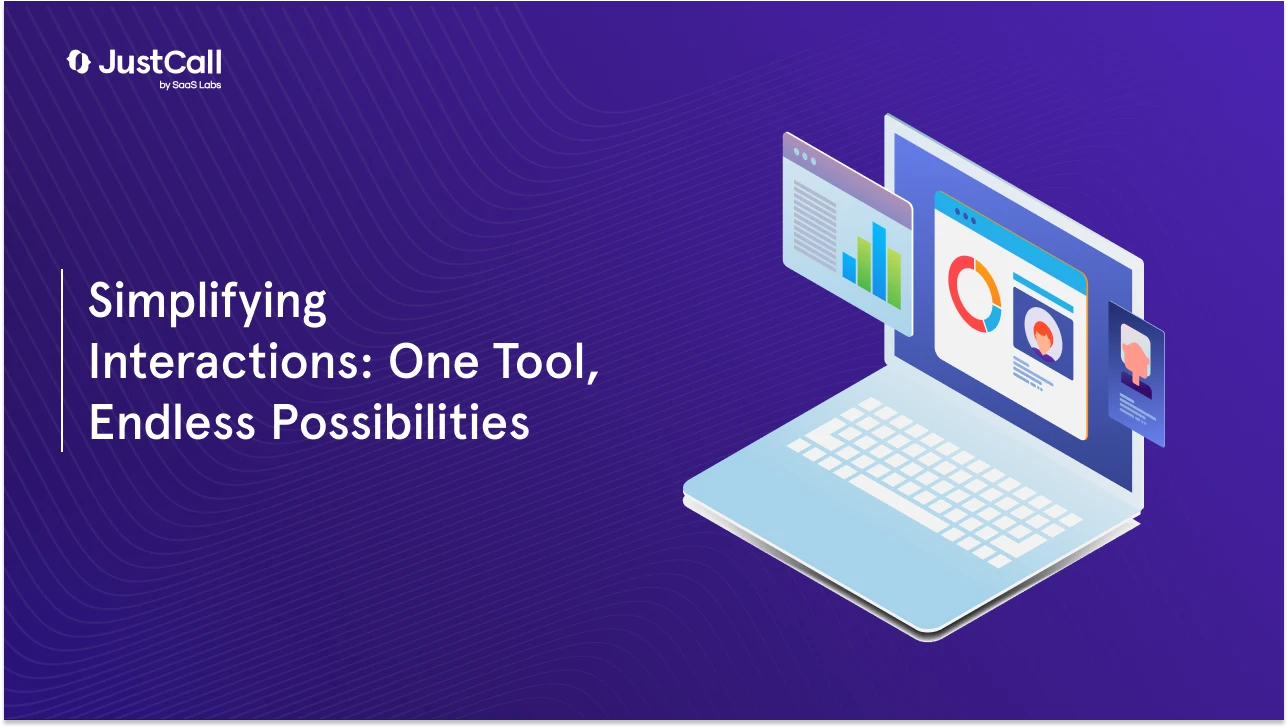Digital customer interactions are turning increasingly complex and interwoven. A customer, upon seeing your ad on social media, may connect with you over Messenger. Days later, they may select the click-to-call button while exploring your website.
They may seek additional information over email, receive updates or alerts over text messages, look for assistance through live chat, and the list goes on. Google even suggests that such back-and-forth can span 500+ interactions!
Such an intertwined ball of communication channels and touchpoints calls for a single-tool solution to manage everything.
Problems With Multi-Tool Customer Interaction Ecosystem
To understand why a consolidated customer interaction software solution is the need of the hour, one has to understand the perils of relying on multiple tools. These include:
- Infrastructural Complexities: You’ve already seen the highly versatile nature of customer interactions at various touchpoints. Imagine having a tool for each of them! As the number of tools spikes, managing them all would become progressively difficult and time- and resource-consuming.
- Compounding Costs: Managing numerous tools also presents the problem of having to pay for them individually. It is not just the subscription costs that will accrue but also the expenses related to operating and maintaining these platforms. Plus, the cost of remuneration for employees.
- Data Silo Formation: As customer interactions spread across different frameworks, useful data will remain in vacuums. The lack of borderless visibility of customer data will prevent businesses from gaining a singular, holistic view of the customer.
- Inconsistencies: The fragmented nature of the communication network will inject inconsistencies at most interaction points. The same customers would be treated differently across channels, and similar issues would receive different solutions.
- Operational Redundancies: Some tools may have overlapping features or functionalities that may remain underutilized. Similarly, any disruption in workflows can cause a drop in productivity and delay in response times.
- Integration Issues: When multiple tools are involved, they should be able to communicate with each other (or else they will birth data siloes, as discussed previously). However, not all tools can integrate with each other seamlessly, and even the compatible ones may face synchronization issues.
- Training Overhead: A large toolset calls for an equally large workforce. At the same time, it requires employee training and onboarding so that they can continue making the most of the tools. Such requirements restrict scalability by tightly coupling performance with available resources.
Achieve Peak Call Center Productivity With JustCall
Consolidating Customer Interactions Into a Single Tool Solution: What to Look For
Even though businesses need to establish a presence across different touchpoints, they cannot allow it to bloat their communication tech stack. A consolidated customer interaction software solution can benefit businesses by boosting efficiency, centralizing data, delivering consistency, and offering scalability.
To gain such advantages, the contact center software should have the following features:
Omnichannel Communication
You want a single tool solution that can spread across multitudes of channels – voice calls, SMS, live chat, email, social media, etc. Call center software that supports such a variety of channels will minimize your dependence on other platforms or systems to maintain contact through the remaining channels.
Plus, it grants customers the convenience of connecting with businesses on their preferred channels. A win-win for all!
Unified Inbox
As the name suggests, a unified inbox is a centralized repository of all customer interactions – regardless of the channel used. From call logs to emails to chat transcripts, you can find everything in a single location.
Moreover, it integrates with every desktop tool or application so that agents can view, manage, and respond to customer inquiries through a single dashboard rather than individual platforms.
Common Database
A centralized database should back a single tool solution for handling all customer interactions. As such, most contact center software systems come with a built-in database for knowledge sharing.
Such information can be shared internally to empower and enable agents while handling customer inquiries, or businesses can also share them externally as FAQs and self-help portals. Either way, it will infuse greater consistency in the quality of service delivered.
Customer Relationship Management (CRM) Integration
Since we’re on the subject of data management, it bears mentioning that the call center software should also integrate seamlessly with CRM systems. Such a requirement is necessary as the built-in database may not necessarily be as capable and functional as a CRM in capturing, organizing, and analyzing customer data.
From keeping a record of historic interactions and their outcomes to real-time customer behaviors, it can make interactions more meaningful, value-loaded, and personalized.
Workflow Automation
Contact center software with workflow automation can eliminate redundancies and friction points. For starters, it can cater to routine inquiries to handle a bulk of non-essential customer interactions.
Similarly, businesses can use workflow automation to route customer inquiries to the correct department or agent. Automation also plays a starring role in trigger-based interactions and follow-ups that are necessary to maintain high engagement levels.
Reporting and Analytics
Reporting and analytics tools form the backbone of customer interaction software as they continuously monitor processes and track progress. Such proactive tracking flags any issues and bottlenecks even before they morph into bigger concerns.
Further, they can highlight any underutilized or oversaturated channels so that businesses can optimize their communication strategies accordingly.
JustCall: The One-Stop Customer Interaction Software Tool
If you’re looking for a single tool solution to centralize all customer interactions, then meet JustCall.
JustCall is an end-to-end contact center software that can handle all customer interactions, irrespective of the channel. It serves as a unified platform for calls, texts, socials, and more to offer businesses a unilateral view of the customers and their requirements.
The resulting consolidation promises all the benefits of scalable, single-view call center software without any of the hassles of maintaining it.











